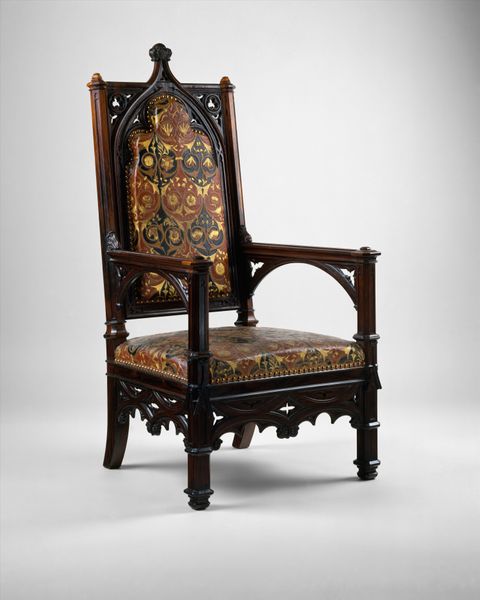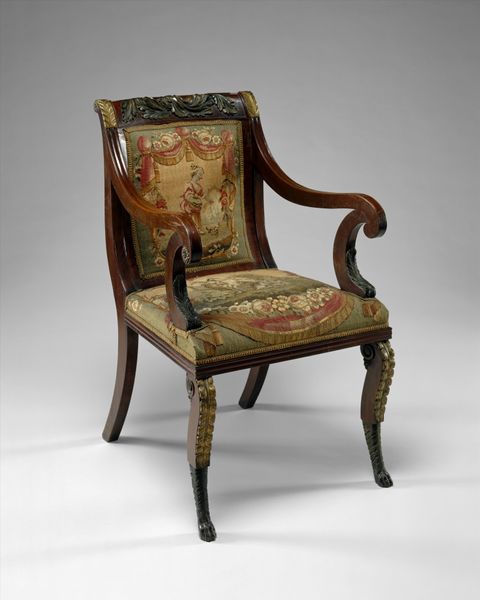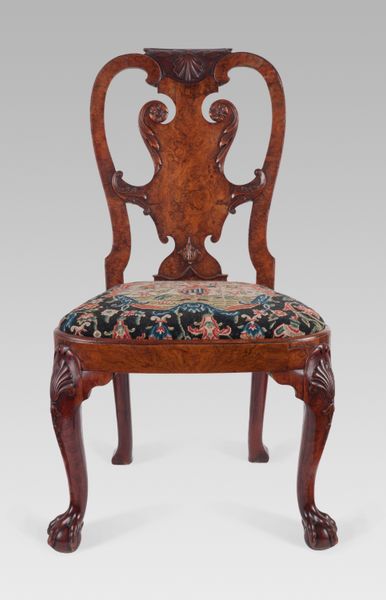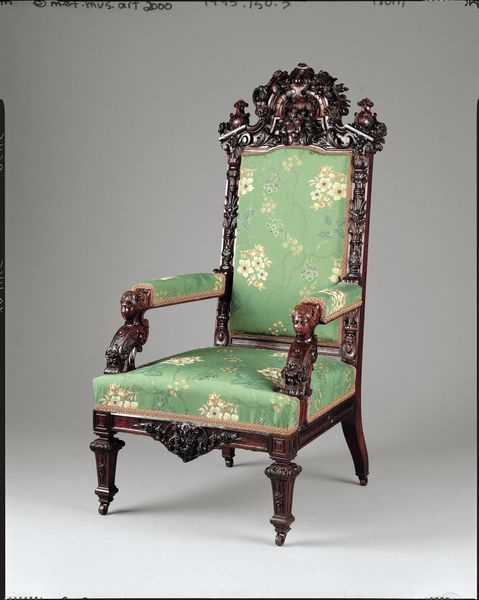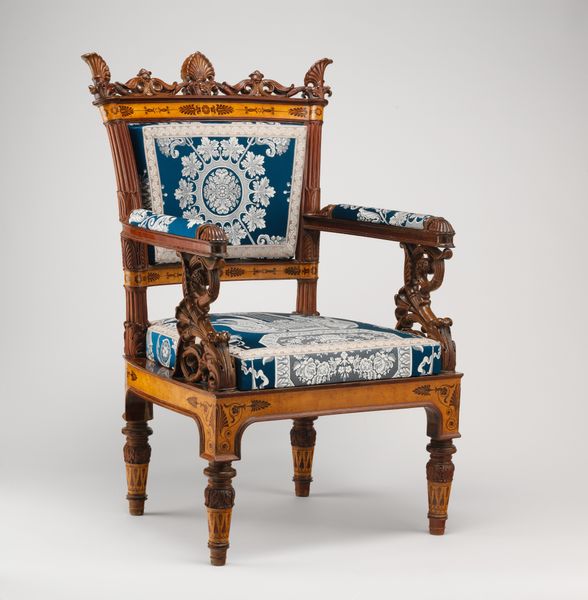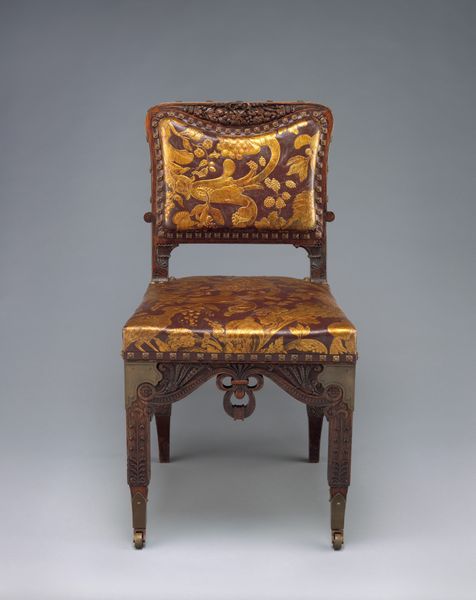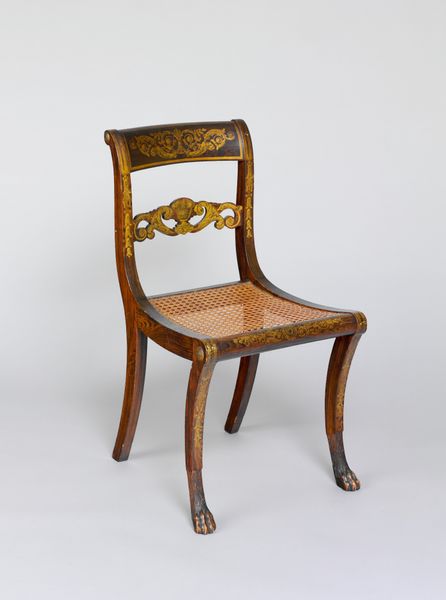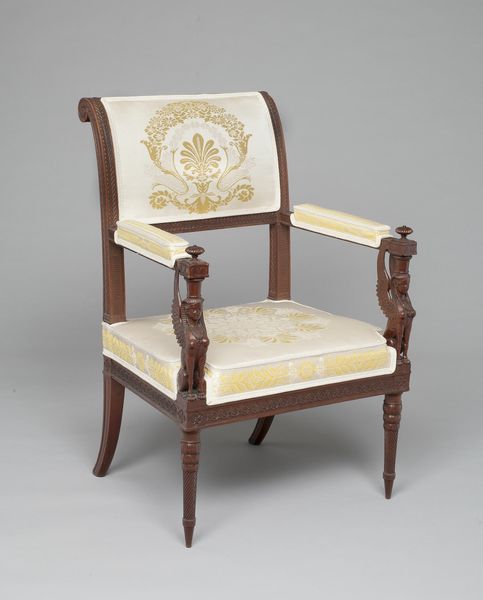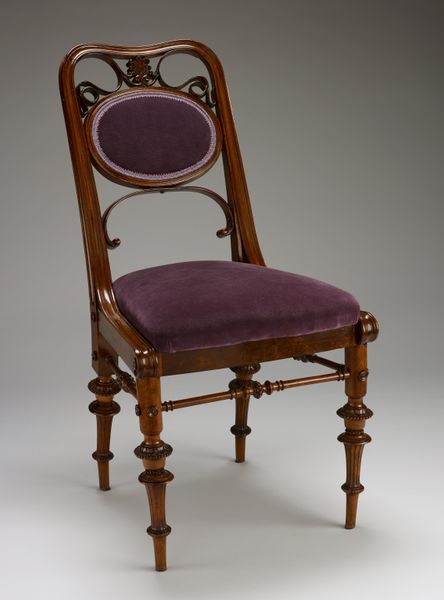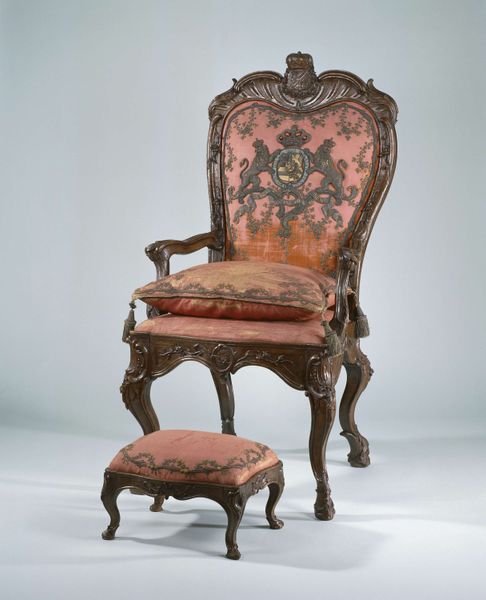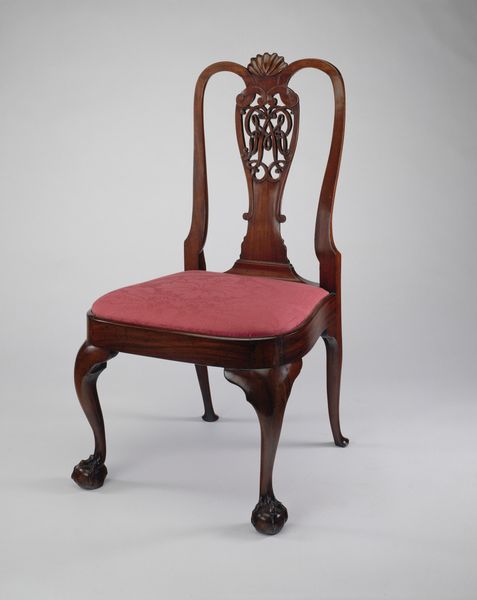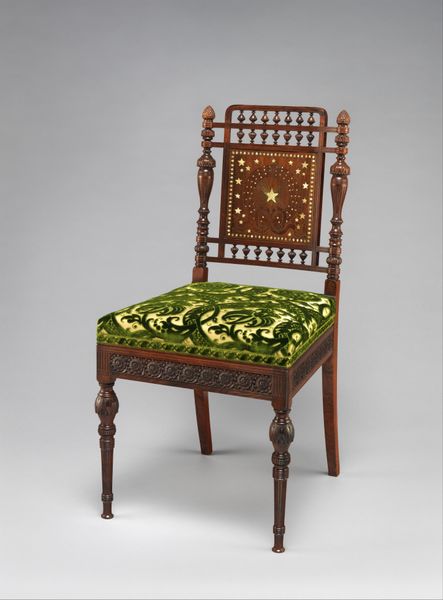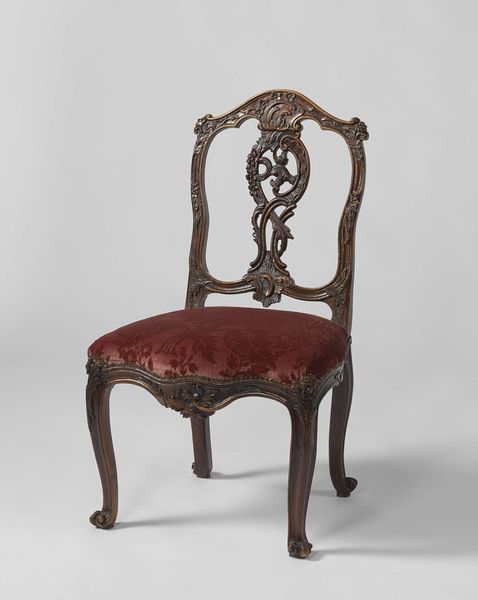
Dimensions: 54 x 24 x 24 in. (137.2 x 61 x 61 cm)
Copyright: Public Domain
Editor: So, we're looking at "Chair" from 1867 to 1877, created by Henry Fernbach. It's a mix of wood and textile, and it strikes me as quite ornate for everyday furniture. How do you see this piece, considering its materiality? Curator: Well, first we have to recognize this wasn't *everyday* furniture, but a statement about social values being presented in the domestic space. Fernbach’s "Chair," constructed from carved wood and carefully chosen textiles, really exemplifies the Arts and Crafts movement’s reaction against industrial production. Think about the labor involved here – the carving, the weaving, the deliberate construction of the geometric pattern. It speaks to a desire to re-establish human skill and artistry within an increasingly mechanized world. Editor: That’s a great point. The Arts and Crafts movement. So, is the emphasis on handcrafting a kind of critique of the societal shift towards mass production? Curator: Exactly. It’s about value – not just monetary, but the value placed on human labor and the inherent beauty found in meticulously crafted objects. The materials themselves - the specific type of wood, the texture of the textile - they’re all carefully considered choices contributing to the overall message. This isn’t simply a chair; it’s a declaration. Do you see how the material processes elevate function to something more meaningful? Editor: Definitely. It’s interesting to think of a chair as a kind of social commentary, reflecting these values about labor and craftsmanship. I hadn't thought about it that deeply initially. Curator: And considering that it's in the Metropolitan Museum of Art now, its shift into a high-art object provides it with a different type of cultural worth. The act of enshrining elevates what it stands for. What is preserved, and who has access to this preservation? Editor: This has totally changed how I look at it. I'm seeing how the process and material are essential to its statement, and make me question consumption too. Curator: I’m glad to hear it! Looking at art through a material lens can reveal a lot about its role in the context it was made.
Comments
No comments
Be the first to comment and join the conversation on the ultimate creative platform.
